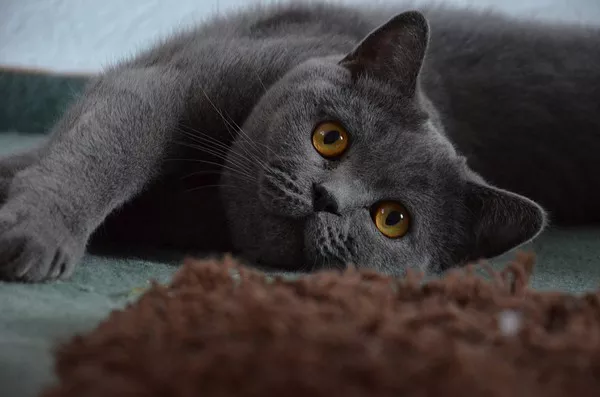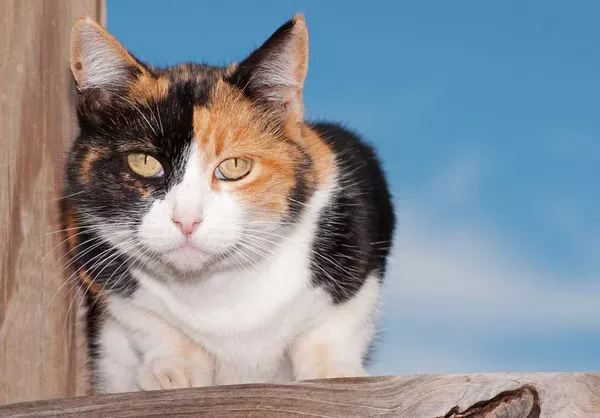Cats are known for their propensity to sleep for long periods, often leaving their human companions wondering why they spend so much time in slumber. The sight of a curled-up cat taking a nap is a common one, but have you ever wondered why your feline friend seems to sleep more than you do? In this article, we’ll delve into the fascinating world of feline sleep patterns, exploring the reasons behind their extended rest periods, the different stages of cat sleep, and the role sleep plays in a cat’s overall well-being.
Evolutionary Origins of Sleep Habits
1. Predatory Nature
Cats are natural predators, and their ancestors were apex predators that required bursts of intense activity followed by periods of rest to conserve energy. This evolutionary history has shaped their sleep patterns to include both short bursts of high-energy activity and extended periods of rest.
2. Efficient Energy Use
Cats’ energy-efficient metabolism allows them to maximize their hunting efficiency while conserving energy during rest periods. Sleeping more conservatively ensures that they have the necessary energy reserves for hunting and other essential activities.
The Sleep-Wake Cycle of Cats
1. Crepuscular Nature
Cats are crepuscular animals, which means they are most active during the dawn and dusk hours. This behavior aligns with their evolutionary role as nocturnal hunters and allows them to avoid the intense heat of the day.
2. Short Awake Periods
While cats are known for their sleepiness, they do have periods of wakefulness throughout the day. These wakeful phases are often characterized by play, grooming, and short exploratory ventures.
The Different Stages of Cat Sleep
1. Light Sleep
Cats experience a light sleep stage, similar to the REM (rapid eye movement) stage in humans. During this stage, their muscles are relaxed, and they may twitch or move their paws as if they are dreaming.
2. Deep Sleep
Deep sleep is essential for feline physical restoration. During this stage, a cat’s body repairs tissues, strengthens the immune system, and helps in overall growth and development.
See Also: How Much Do Ragdoll Kittens Sleep: Their Sleeping Habits
The Role of Sleep in Cat Behavior
1. Dreaming and Memory Processing
Cats’ active dream-like states during REM sleep suggest that they may process information and memories while they sleep. This could contribute to their ability to learn from experiences and adapt their behavior accordingly.
2. Hunting Instincts
Sleeping is critical for cats to replenish the energy required for hunting, stalking, and pouncing. Cats rely on these instincts to fulfill their predatory nature, even if they are domesticated.
Factors Influencing Cat Sleep
1. Age
Kittens and senior cats tend to sleep more than adult cats. Kittens need rest for growth and development, while older cats require extra sleep to compensate for age-related changes.
2. Health and Comfort
Cats may sleep more when they are unwell or recovering from an illness. A comfortable and safe environment is crucial for a cat’s well-being and sleep quality.
3. Environment
The home environment and the presence of other pets or humans can influence a cat’s sleep patterns. Cats may adjust their sleep schedules based on the activities and routines of their human companions.
See Also: Do Bengal Cats Sleep with Their Owners? [Revealed!]
Providing a Comfortable Sleep Environment
1. Cozy Sleeping Spots
Cats appreciate comfortable sleeping spots that offer warmth, security, and a vantage point for observing their surroundings. Providing soft beds, blankets, or elevated perches can satisfy their need for cozy retreats.
2. Quiet and Calm
Cats are sensitive to their environment, so creating a peaceful and quiet atmosphere during their sleep hours ensures they are not disturbed and can rest peacefully.
See Also: Choosing the Ideal Sleeping Arrangement for Your Kitten at Night
Monitoring Changes in Sleep Patterns
1. Normal Variations
It’s important to recognize that cats’ sleep patterns can vary, and some days they may sleep more than usual. This can be influenced by factors such as weather, activity levels, and recent experiences.
2. Changes in Behavior
If you notice significant changes in your cat’s sleep patterns, such as excessive sleepiness, lethargy, or difficulty waking up, it could be a sign of an underlying health issue. Consulting a veterinarian is recommended to rule out any medical concerns.
Conclusion
In conclusion, a cat’s need for extended periods of sleep is deeply rooted in its evolutionary history and natural behaviors. The combination of predatory instincts, energy-efficient metabolism, and the need for physical restoration shapes their sleep patterns. Understanding the different stages of cat sleep, the role sleep plays in their behavior, and the factors influencing their sleep habits can help cat owners provide a nurturing environment that supports their feline companion’s overall well-being. By respecting their need for rest and creating a comfortable sleep environment, cat owners can ensure that their beloved pets enjoy the benefits of quality sleep and wake up refreshed and ready to embrace their natural instincts.

























